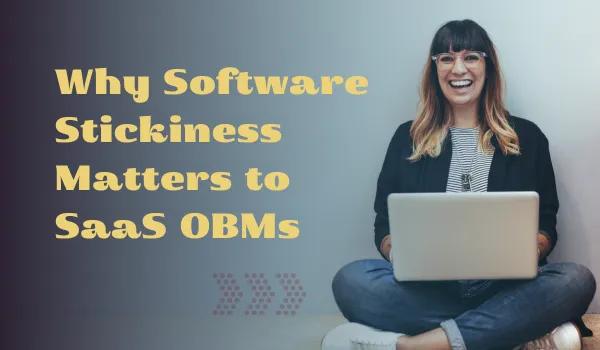
Why Software Stickiness Matters to SaaS OBMs
In today's rapidly evolving technological landscape, software stickiness has become a crucial factor for the success of SaaS OBM selling white label software. The term "stickiness" refers to how indispensable a software product becomes to its users, making them reluctant to switch to a competitor. This stickiness is not just a buzzword; it’s a vital component of a successful recurring revenue model and a key driver of long-term business growth and stability. In this blog post, we'll explore why software is sticky and why that matters to a SaaS OBM selling white label software.
Understanding Software Stickiness
Definition of Software Stickiness: Software stickiness is the measure of how integral a software product becomes to its users’ daily operations, making them less likely to abandon it for another product. It’s about creating a dependency that ensures continuous use and renewals.
Key Factors Contributing to Software Stickiness:
User Experience: A seamless, intuitive, and enjoyable user experience keeps users engaged and satisfied, encouraging them to stick with the software.
Feature Set: Offering a comprehensive and valuable feature set that addresses user needs effectively can make your software indispensable.
Integration Capabilities: The ability to integrate with other tools and systems that users rely on makes your software more valuable and harder to replace.
Benefits of High Software Stickiness
Increased User Engagement and Satisfaction: When software is sticky, users engage with it regularly and are more satisfied with its performance, leading to higher retention rates.
Higher Renewal Rates and Reduced Churn: Clients are more likely to renew their subscriptions when they find the software essential to their operations, reducing churn rates and ensuring a stable revenue stream.
Enhanced Customer Loyalty and Advocacy: Sticky software turns clients into loyal advocates who promote your product, creating organic growth opportunities through word-of-mouth marketing.
Why Software is Sticky
Integration into Daily Operations: Software often becomes an integral part of a user's daily operations, especially in a business context. Tools like customer relationship management (CRM) systems, email marketing platforms, and automation software become embedded in workflows and processes, making it challenging to switch.
Data Entrenchment: Over time, users accumulate vast amounts of data within their software applications. This data, whether it be customer information, financial records, or project details, becomes a critical asset. The prospect of migrating data to a new platform is often daunting due to the risks of data loss, corruption, or incompatibility issues, further discouraging users from switching software.
Customization and Personalization: Software platforms often allow for a high degree of customization and personalization to meet specific business needs. Custom workflows, integrations, and personalized settings make the software highly tailored to the user's requirements, creating a sense of irreplaceability.
Learning Curve and User Investment: Learning to use new software effectively can involve a significant investment of time and effort. Users and businesses train their staff, develop expertise, and sometimes even reshape their operational models around the capabilities of the software. This investment creates a psychological and practical barrier to switching, as doing so would negate the initial investment and require a new learning curve.
Network Effects: Software often benefits from the network effect, gaining additional value as more team members use it. The software becomes part of the daily operations not only for the business owner but also for their entire team. Switching to an alternative can cause significant disruption to business processes, making the current software even stickier.
Why Stickiness Matters to a SaaS OBM
Predictable and Stable Revenue: High stickiness ensures that clients continue to renew their subscriptions, providing a predictable and stable revenue stream. This financial stability is crucial for long-term planning and growth.
Reduced Customer Acquisition Costs: When customers stick with your software, you spend less on acquiring new clients. Retaining existing customers is often more cost-effective than acquiring new ones, allowing you to allocate resources more efficiently.
Increased Customer Lifetime Value: Sticky software increases the customer lifetime value (CLV) by extending the duration of the customer relationship and increasing the revenue generated per customer.
Organic Growth through Advocacy: Satisfied, long-term customers are more likely to recommend your software to others, leading to organic growth through word-of-mouth marketing. This can significantly boost your market presence and attract new customers without extensive marketing efforts.
Conclusion
Software stickiness is a powerful driver of success for a SaaS OBM selling white label software. When your software becomes indispensable to your users, you can ensure higher engagement, increased renewal rates, enhanced customer loyalty, and stable revenue streams. Understanding and leveraging the factors that contribute to software stickiness can provide a significant competitive advantage and support long-term business growth.
